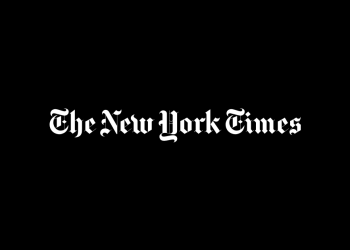Housing was always going to be the hot topic this election campaign. And no wonder.
Home ownership is slipping out of reach for many Australians, especially the young and the poor, as house prices have risen much faster than incomes.
So it was no surprise that both major parties officially launched their campaigns with new pitches to support first home buyers.
But will they make a difference? And if not, what will?
In an announcement that no serious economist had been calling for, the Coalition pledged to make mortgage payments tax deductible for first home buyers who purchase a newly built home.
The plan would allow buyers to deduct the interest costs on the first $650,000 of their mortgage from their taxable income for the first five years after purchase, and only for individuals earning less than $175,000, and couples earning less than $250,000.
Like the Coalition’s existing plan to allow first home buyers to withdraw up to $50,000 from their super to buy a home, making mortgage payments tax deductible would put more money in the pockets of first home buyers.
But the costs incurred in owning an asset should only be tax deductible if any capital gains are also taxed – as they are in countries that allow deductibility of mortgage repayments, such as the US – and no one is proposing taxing the family home. Which makes this policy just another first home buyers’ grant by another name.
But unlike first home buyers’ grants, which do raise buyers’ purchasing power, it’s unclear whether making mortgage interest payments tax deductible will result in banks being willing to lend more to eligible first home buyers.
It’s also highly regressive, subsidising 47% of high-earners’ mortgage interest costs – offering a benefit of $87,000 over five years at prevailing interest rates for a primary income earner on $240,000 who deducts the interest on a $650,000 mortgage.
Those on low incomes – the group most likely to be priced out of home ownership – would receive much less. For someone earning $60,000, they would receive just $23,000 in tax savings on a $250,000 mortgage.
The good news is that the deduction will only be available to roughly the quarter of first home buyers who buy a newly built home, who make up less than 1 in 10 of all home buyers each year.
The plan may help build some extra homes, since the value of the tax concession will be priced into the cost of new homes, which could make some marginal developments feasible at a time when construction costs have spiked.
Scheme for smaller deposits a solution?
On the same day, Labor pledged to extend the First Home Guarantee scheme, which guarantees 15% of the property’s value for first home buyers, allowing people to buy a home with just a 5% deposit and avoid Lenders Mortgage Insurance, which costs $23,000 for the average first home buyer.
There will be no caps on the number of places (currently 50,000 each year), nor on the incomes of first home buyers (currently $125,000 for singles, and $200,000 for couples), starting from 1 July 2026.
And property price limits will also be raised to average house prices in each city and region – rising from $900,000 to $1.5m in Sydney, for example.
The Coalition has also promised to expand the scheme – by raising the income threshold for the scheme from $125,000 to $175,000 for singles, and from $200,000 to $250,000 for couples, with the same property price caps as Labor.
The government expects that nearly 80,000 first home buyers would use the expanded scheme each year.
But again, the policy is unlikely to raise the rate of home ownership, since those struggling to afford a home are already eligible for the scheme. Abolishing the income caps will bring higher-income earners into the scheme – and they are already likely to buy a home anyway without the government’s support.
High hopes for more housing
More promising is Labor’s announcement today that it would invest $10bn ($2bn in grants, $8bn in concessional loans) to partner with state developers and industry, to build up to 100,000 homes – with these homes reserved for sale only to first home buyers.
Australia has not built enough housing to meet the needs of our growing population, largely because state land-use planning regimes have made it too hard to build more homes in the established suburbs of our major cities.
Sharp rises in interest rates slowed housing approvals, especially for higher-density developments, as developers struggled for sufficient pre-sales to secure finance and commence construction. State-run developers can help get housing construction moving since they don’t need to wait for pre-sales to start building.
If all built, these 100,000 homes would be enough to reduce house prices and rents by up to 2.5%, more than offsetting the impact on house prices of expanding the First Home Guarantee Scheme.
But Labor will have to work hard to avoid funding homes that state governments intend to build anyway, or saddling successful developments with requirements, like a mandated share of affordable homes offered to first home buyers at below cost, that make developments uneconomic to build.
It follows the Coalition’s recently announced plan to offer councils $5bn (via an unspecified mix of grants and concessional loans) to connect new homes to roads, sewerage, water, and other infrastructure around housing projects.
And the government has already committed $3.5bn in incentive payments to the states if they can deliver on the National Cabinet Housing Plan to build 1.2m homes over five years.
At least, unlike past elections, both major parties are competing over who can get the most homes built. That matters, because housing will only get more affordable in Australia if we build more of it.
#Home #ownership #slipping #reach #Australians #major #parties #promises #difference #Brendan #Coates























